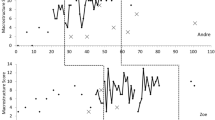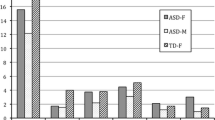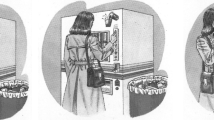Previous research has found few quantitative differences between children with high-functioning autism spectrum disorders (ASDs) and well-matched controls in the length, complexity, and structure of their narratives. Researchers have noted, however, that narratives of children with ASDs have an unusual and idiosyncratic nature. This study provides an analysis of narratives in 17 children with high-functioning ASDs and 17 typically developing children matched on age, gender, language abilities, and cognitive abilities. We examined story recall and narrative coherence. The study revealed no group differences in story length or syntactic complexity. Children with ASDs also did not differ from controls in their use of the gist of a story to aid recall, or in their sensitivity to the importance of story events. Children with ASDs did, however, produce narratives that were significantly less coherent than the narratives of controls. Children with ASDs appeared less likely to use the gist of the story to organize their narratives coherently. These findings are discussed with regard to their relationship to other cognitive and linguistic difficulties of children with ASDs.


Similar content being viewed by others
REFERENCES
American Psychiatric Association. (1994). Diagnostic and statistical manual of mental disorders (4th ed.). Washington, DC: Author.
Applebee, A. N. (1978). The child's concept of a story. Chicago: University of Chicago Press.
Bamberg, M. (1987). Narrative development: Six approaches. Mahwah, NJ: Erlbaum.
Baron-Cohen, S., Leslie, A. M., & Frith, U. (1986). Mechanical, behavioral, and intentional understanding of picture stories in autistic children. British Journal of Developmental Psychology, 4, 113–125.
Bartak, L., Rutter, M., & Cox, A. (1975). A comparative study of infantile autism and specific developmental receptive language disorder: I. The children. British Journal of Psychiatry, 126, 127–145.
Bennetto, L., Pennington, B. F., & Rogers, S. J. (1996). Intact and impaired memory functions in autism. Child Development, 67, 1816–1835.
Boucher, J. (1981). Immediate free recall in early childhood autism: Another point of behavioural similarity with the amnesic syndrome. British Journal of Psychology, 72, 211–215.
Brainerd, C. J., & Reyna, V. F. (1998). Fuzzy-trace theory and children's false memories. Journal of Experimental Child Psychology, 71, 81–129.
Bruner, J., & Feldman, C. (1993). Theories of mind and the problem of autism. In S. Baron-Cohen, H. Tager-Flusberg, & D. J. Cohen (Eds.), Understanding other minds: Perspectives from autism (pp. 267–291). Oxford: Oxford University Press.
Capps, L., Losh, M., & Thurber, C. (2000). ‘‘The frog at the bug and made his mouth sad’’: Narrative competence in children with autism. Journal of Abnormal Child Psychology, 28, 193–204.
Crais, E. R., & Lorch, N. (1994). Oral narratives in school-age children. Topics in Language Disorders, 14, 13–31.
Dahlgren, S. O., & Gillberg, C. (1989). Symptoms in the first two years of life: A preliminary population study of infantile autism. European Archives of Psychiatric and Neurological Science, 283, 169–174.
Davis, G. A., O’Neil-Pirozzi, T. M., & Coon, M. (1997). Referential cohesion and logical coherence of narration after right hemisphere stroke. Brain and Language, 56, 183–210.
Donahue, M. (1985). Communicative style in learning disabled children: Some implications for classroom discourse. In D. N. Ripich & F. M. Spinelli (Eds.), School discourse problems (pp. 97–124). San Diego, CA: College-Hill.
Flory, K. S., Milich, R., Lemberger, C., Whirley, K., Hayden, A., & Strange, C. (2003). Why do people with ADHD have deficits in story production and comprehension? Poster presented at the Biennial Meeting of the Society for Research in Child Development, Tampa, FL.
Fox, B. J., & Wright, M. (1997). Connecting school and home literacy experiences through cross-age reading. Reading Teacher, 15, 535–555.
Frith, U. (1989). Explaining the enigma. Oxford: Blackwell.
Gopnik, A., Capps, L., & Meltzoff, A. N. (2000). Early theories of mind: What the theory can tell us about autism. In S. Baron-Cohen, H. Tager-Flusberg, & D. J. Cohen (Eds.), Understanding other minds: Perspectives from developmental cognitive neuroscience (2nd ed., pp. 50–72). Oxford: Oxford University Press.
Gummersall, D. M., & Strong, C. J. (1999). Assessment of complex sentence production in a narrative context. Language, Speech, and Hearing Services in Schools, 30, 52–64.
Hermelin, B., & O’Connor, N. (1975). The recall of digits by normal deaf and autistic children. British Journal of Psychology, 66, 203–209.
Houston, G. (1997). The power of story: What I have learned as a writer and a teacher. Reading Teacher, 50, 382–395.
Hymes, D. (1971). On communicative competence. In J. Pride & J. Holmes (Eds.), Sociolinguistics (pp. 269–293). Baltimore: Penguin.
Johnson, R. E. (1970). Recall of prose as a function of the structural importance of the linguistic units. Journal of Verbal Learning and Verbal Behavior, 9, 12–20.
Joliffe, T., & Baron-Cohen, S. (2000). Linguistic processing in high-functioning adults with autism or Asperger syndrome. Is global coherence impaired? Psychological Medicine, 30, 1169–1187.
Kaland, N., Moller-Nielsen, A., Callesen, K., Mortensen, E. L., Gottleib, D., & Smith, L. (2002). A new ‘advanced’ test of theory of mind: Evidence from children and adolescents with Asperger syndrome. Journal of Child Psychology and Psychiatry, 43, 517–528.
Karmiloff-Smith, A. (1985). Language and cognitive processes from a developmental perspective. Language and Cognitive Processes, 1, 61–85.
Kintsch, W. (1987). Psychological processes in discourse production. In H. Dechert & M. Raupach (Eds.), Psycholinguistic models of production. Norwood, NJ: Ablex.
Landa, R. (2000). Social language use in Asperger syndrome and high-functioning autism. In A. Klin, F. Volkmar, & S. Sparrow (Eds.), Asperger syndrome (pp. 125–155). New York: Guilford Press.
Landa, R., Martin, M., Minshew, N., & Goldstein, G. (1995). Discourse and abstract language ability in non-retarded individuals with autism. Paper presented at the Biennial Meeting of the Society for Research in Child Development, Indianapolis, IN.
Lorch, E. P., Sanches, R. P., van den Broek, P., Milich, R., & Welsh, R. (1999). The relation of story structure properties to recall of television stories in young children with attention-deficit hyperactivity disorder and nonreferred peers. Journal of Abnormal Child Psychology, 27, 293–309.
Lord, C., & Paul, R. (1997). Language and communication in autism. In D. Cohen & F. Volkmar (Eds.), Handbook of autism and pervasive developmental disorders (pp. 195–225). New York: Wiley.
Lord, C., Risi, S., Lambrecht, L., Cook, E., Leventhal, B., DiLavore, P., Pickles, A., & Rutter, M. (2000). Autism Diagnostic Observation Schedule—Generic: A standard measure of social and communication deficits associated with the deficits of autism. Journal of Autism and Developmental Disorders, 30, 205–224.
Lord, C., Rutter, M., & LeCouteur, A. (1994). Autism Diagnostic Interview—Revised: A revised version of a diagnostic interview for caregivers of individuals with possible pervasive developmental disorders. Journal of Autism and Developmental Disorders, 24, 659–685.
Lord, C., & Venter, A. (1992). Outcome and follow-up studies of high-functioning autistic individuals. In E. Schopler & G. Mesibov (Eds.), High-functioning individuals with autism (pp. 187–199). New York: Plenum.
Losh, M., & Capps, L. (2003). Narrative ability in high-functioning children with autism or Asperger's syndrome. Journal of Autism and Developmental Disorders, 33, 239–251.
Loveland, K., McEvoy, R., Tunali, B., & Kelley, M. L. (1990). Narrative story telling in autism and Down's syndrome. British Journal of Developmental Psychology, 8, 9–23.
Loveland, K., & Tunali, B. (1993). Narrative language in autism and the theory of mind hypothesis: A wider perspective. In S. Baron-Cohen, H. Tager-Flusberg, & D. J. Cohen (Eds.), Understanding other minds: Perspectives from autism (pp. 267–291). Oxford: Oxford University Press.
MacWhinney, B. (2000). The CHILDES project: Tools for analyzing talk (3rd edn.). Mahwah, NJ: Erlbaum.
Matson, J. L., & Sweizy, N. (1994). Social skills training with autistic children. In J. L. Matson (Ed.), Autism in children and adults: Etiology, assessment and intervention (pp. 241–260). Pacific Grove, CA: Brooks/Cole.
Mayer, M. (1969). Frog, where are you? New York: Dial Books for Young Readers.
Merrit, D., & Liles, B. (1989). Narrative analysis: Clinical applications of story generation and story-retelling. Journal of Speech and Hearing Disorders, 54, 429–438.
Minshew, N. J., & Goldstein, G. (1993). Is autism an amnesic disorder? Evidence from the California Verbal Learning Test. Neuropsychology, 7, 209–216.
Minshew, N. J., Meyer, J., & Goldstein, G. (2002). Abstract reasoning in autism: A dissociation between concept formation and concept identification. Neuropsychology, 16, 327–334.
Mottron, L., Burack, J. A., Iarocci, G., Belleville, S., & Ennis, J. T. (2003). Locally oriented perception with intact global processing among adolescents with high-functioning autism: evidence from multiple paradigms. Journal Child Psychology and Psychiatry, 44, 904–913.
Norbury, C. F., & Bishop, D. V. M. (2002). Inferential processing and story recall in children with communication problems: A comparison of specific language impairment, pragmatic language disorder, and high-functioning autism. International Journal of Language and Communication Disorders, 37, 227–251.
Ozonoff, S., Cook, I., Coon, H., Dawson, G., Joseph, R. M., Klin, A., McMahon, W. M., Minshew, N., Munson, J. A., Pennington, B. F., Rogers, S. J., Spence, M. A., Tager-Flusberg, H., Volkmar, F. R., & Wrathall, D. (2004). Performance on Cambridge Neuropsychological Test Automated Battery subtests sensitive to frontal lobe function in people with Autistic Disorder: Evidence from the Collaborative Programs of Excellence in Autism network. Journal of Autism and Developmental Disorders, 34, 139–150.
Pearlman-Avinion, S., & Eviatar, Z. (2001). Narrative analysis in developmental, social, and linguistic pathologies: Dissociation between emotional and informational language use. Brain and Cognition, 48, 494–499.
Pennington, B. F., & Ozonoff, S. (1996). Executive functions and developmental psychopathology. Journal of Child Psychology and Psychiatry, 37, 51–87.
Phelps-Terasaki, D., & Phelps-Gunn, T. (1992). Test of pragmatic language. London: Psychological Corporation.
Plaisted, K. C. (2001). Reduced generalization in autism: An alternative to weak central coherence. In J. A. Burack, T. Charman, N. Yirmiya, & P. R. Zelazo (Eds.), The development of autism, perspectives from theory and research (pp. 149–169). Mahwah, NJ: Erlbaum.
Renner, P., Klinger, L. G., & Klinger, M. R. (2000). Implicit and explicit memory in autism: Is autism an amnesic disorder? Journal of Autism and Developmental Disorders, 30, 327–334.
Rumsey, J. M., & Hamburger, S. D. (1988). Neuropsychological findings in high-functioning men with infantile autism, residual state. Journal of Clinical and Experimental Neuropsychology, 10, 201–221.
Rutter, M. (1970). Autistic children: Infancy to adulthood. Seminars in Psychiatry, 2, 430–450.
Schopler, E., Mesibov, G. B., & Kunce, L. J. (1998). Asperger syndrome or high-functioning autism? New York: Plenum.
Semel, E., Wiig, E. H., & Secord, W. A. (1995). Clinical Evaluation of Language Fundamentals (3rd edn.). San Antonio: Psychological Corporation.
Shapiro, T., & Kapit, R. (1978). Linguistic negation in autistic and normal children. Journal of Psycholinguistics Research, 7, 337–351.
Sheskin, D. J. (2000). Handbook of parametric and nonparametric statistical procedures (2nd edn.). Boca Raton, FL: Chapman & Hall/CRC.
Stein, N. L., & Glenn, C. G. (1979). An analysis of story comprehension in elementary school children. In R. O. Freedle (Ed.), New directions in discourse processing (pp. 53–120). Hillsdale, NJ: Erlbaum.
Strong, C. J. (1998). The strong narrative assessment procedure. Madison, WI: Thinking Publications.
Tager-Flusberg, H. (1989). A psycholinguistic perspective on language development in the autistic child. In G. Dawson (Ed.), Autism: Nature, diagnosis, and treatment (pp. 92–115). New York: Guilford Press.
Tager-Flusberg, H. (1995). ‘Once upon a ribbit’: Stories narrated by autistic children. British Journal of Developmental Psychology, 13, 45–59.
Tager-Flusberg, H. (2001). Understanding the language and communicative impairments in autism. International Review of Research in Mental Retardation, 23, 185–205.
Tager-Flusberg, H. (2004). Strategies for conducting research on language in autism. Journal of Autism and Developmental Disorders, 34, 75–80.
Tager-Flusberg, H., & Sullivan, K. (1995). Attributing mental states to story characters: A comparison of narratives produced by autistic and mentally retarded individuals. Applied Psycholinguistics, 16, 241–256.
Thorndike, R. L., Hager, E. P., & Sattler, J. M. (1986). Stanford Binet Intelligence Scale (4th edn.). Chicago: Riverside Publishing.
Trabasso, T., Secco, T., & van den Broek, P. (1984). Causal cohesion and story coherence. In H. Mandl, N. L. Stein, & T. Trabasso (Eds.), Learning and comprehension of text (pp. 83–111). Hillside, NJ: Erlbaum.
Trabasso, T., & Sperry, L. L. (1985). Causal relatedness and importance of story events. Journal of Memory and Language, 24, 595–611.
Trabasso, T., & van den Broek, P. (1985). Causal thinking and representation of narrative events. Journal of Memory and Language, 24, 612–630.
Twachtman-Cullen, D. (1998). Language and communication in high-functioning autism and Asperger syndrome. In E. Schopler, G. B. Mesibov, & L. J. Kunce (Eds.), Asperger syndrome or high-functioning autism? (pp. 199–225). New York: Plenum.
van den Broek, P., Kremer, K., Lynch, J. S., Kendeou, P., White, M. J., Butler, J., & Wenner, J. A. (2003). Comprehension skills in preschool children and their relation to later reading comprehension. Paper presented at the Biennial Meeting of the Society for Research in Child Development, Tampa, FL.
Wahlberg, T. J. (2001). Text comprehension in individuals with autism: The ability to comprehend written text in high-functioning individuals with autism. Dissertation Abstracts International, 62, 3818.
Whirley, K. S., Lemberger, C. C., Ciarimboli, E. B., Estis, M., Lorch, E. P., & Trauth, D. (2003). What's the story? Narrative recall in children with ADHD. Poster presented at the Biennial Meeting of the Society for Research in Child Development, Tampa, FL.
Wolman, C., van den Broek, P., Lorch, R. F., Jr. (1997). Effects of causal structure on immediate and delayed story recall by children with mild mental retardation, children with learning disabilities, and children without disabilities. Journal of Special Education, 30, 439–455.
Young, E. C., Diehl, J. J., Morris, D., Hyman, S. L., & Bennetto, L. (2005). Pragmatic Language Disorders in Children with Autism: The use of two formal tests to distinguish affected children from controls. Language, Speech, and Hearing Services in Schools, 36, 62–72.
ACKNOWLEDGMENTS
This research was supported by NIH P01 HD35466 grant, a Collaborative Program of Excellence in Autism. We thank Melissa Dupere for her help with coding. We also thank the families who participated in this research.
Author information
Authors and Affiliations
Corresponding author
APPENDIX A: ORIGINAL VERBAL STORY
APPENDIX A: ORIGINAL VERBAL STORY
-
1.
There once was a boy named Tom
-
2.
Who had a pet frog
-
3.
He kept it in a large jar
-
4.
One night while he and his dog were sleeping
-
5.
The frog climbed out of the jar
-
6.
He leapt through an open window
-
7.
When Tom woke up
-
8.
He leaned over his bed
-
9.
To say good morning to the frog
-
10.
But the frog was gone
-
11.
Tom looked everywhere for the frog
-
12.
And the dog looked for him too
-
13.
Tom called out the window
-
14.
When the dog looked in the jar
-
15.
He got his head caught
-
16.
And so when he leaned out the window
-
17.
The heavy jar made him fall
-
(a)
the dog fell out the window
-
(b)
the heavy jar made him fall
-
18.
And the jar broke
-
19.
Tom picked him up
-
20.
To see if he was okay
-
21.
And the dog licked him
-
22.
For being so nice
-
23.
All day long Tom called for the frog
-
24.
He called down holes
-
25.
But Gopher got angry at Tom
-
26.
for disturbing him
-
27.
And while Tom was calling for the frog in a tree hole
-
28.
The dog was getting into more trouble
-
29.
He barked at some bees
-
30.
And jumped at a tree where their bees nest was hanging
-
31.
And the bee's nest fell down
-
32.
The angry bees chased the dog
-
33.
And an angry owl came out of the tree hole
-
34.
To scold Tom
-
35.
It scared him
-
36.
The owl screeched at him
-
37.
To stay away from his home
-
38.
Next Tom climbed a big rock
-
39.
And called again
-
40.
He leaned on some branches
-
41.
To see better
-
42.
But the branches began to move
-
43.
And carry him into the air
-
44.
They weren't branches
-
45.
They were a deer's antlers
-
46.
And the deer ran with Tom on his head
-
47.
The dog ran along too
-
48.
Barking at the deer
-
49.
The deer stopped quickly at the edge of a cliff
-
50.
And threw Tom over the edge
-
51.
And he and the dog fell into a pond
-
52.
Suddenly they both heard something
-
53.
It was a croaking sound
-
54.
And they smiled
-
55.
Tom told the dog to be quiet
-
56.
And they both crept up
-
57.
And looked behind a dead tree
-
58.
There was his frog
-
59.
Sitting proudly with a mother frog
-
60.
And they had eight babies
-
61.
One of the baby frogs leaped forward
-
62.
To greet him
-
63.
He liked Tom
-
64.
And Tom liked him
-
65.
So Tom took the baby frog home
-
66.
To be his new pet
-
67.
And he waved goodbye to his old frog
-
68.
Who now had a family to take care of.
Note. Item 17 is divided into two separate events: the dog falls out the window (17a), the jar caused him to fall (17b). Therefore, with both events counted, there are 69 total events.

Rights and permissions
About this article
Cite this article
Diehl, J.J., Bennetto, L. & Young, E.C. Story Recall and Narrative Coherence of High-Functioning Children with Autism Spectrum Disorders. J Abnorm Child Psychol 34, 83–98 (2006). https://doi.org/10.1007/s10802-005-9003-x
Published:
Issue Date:
DOI: https://doi.org/10.1007/s10802-005-9003-x




